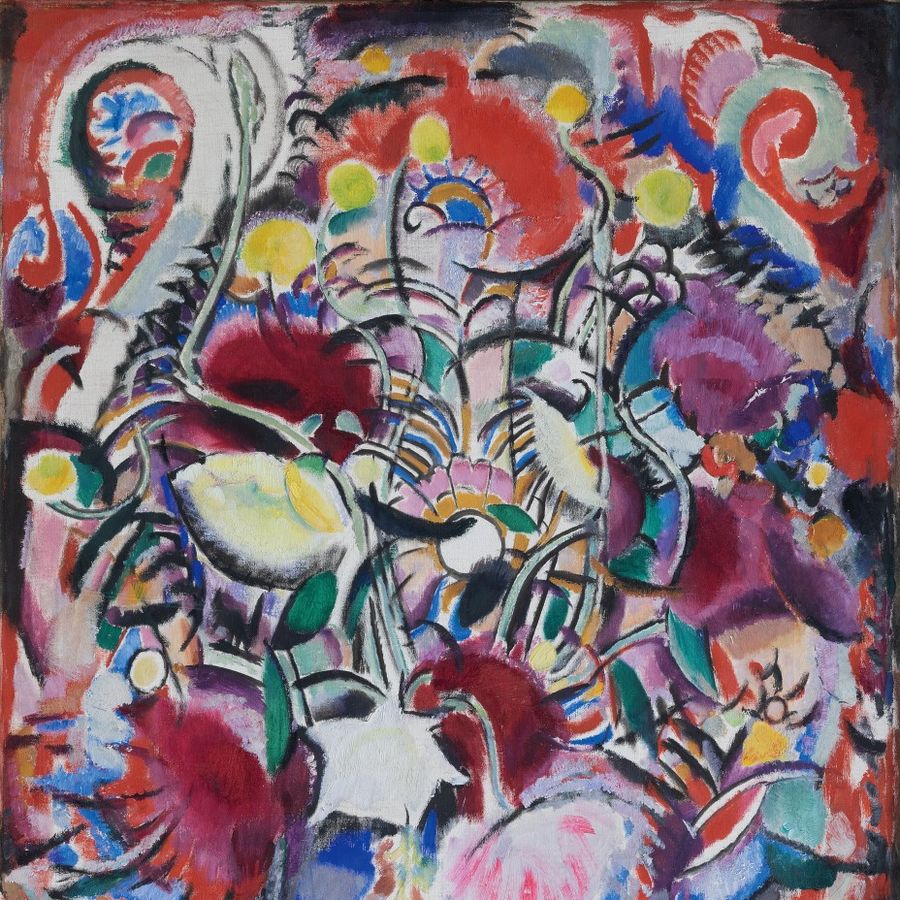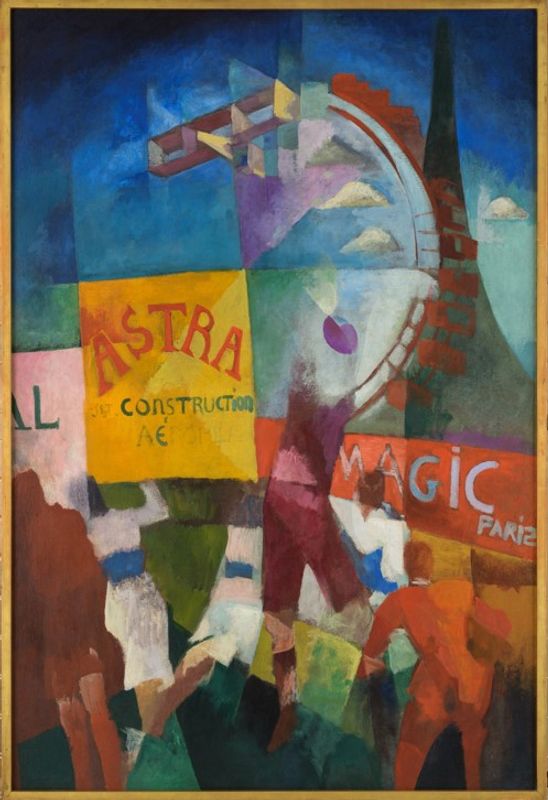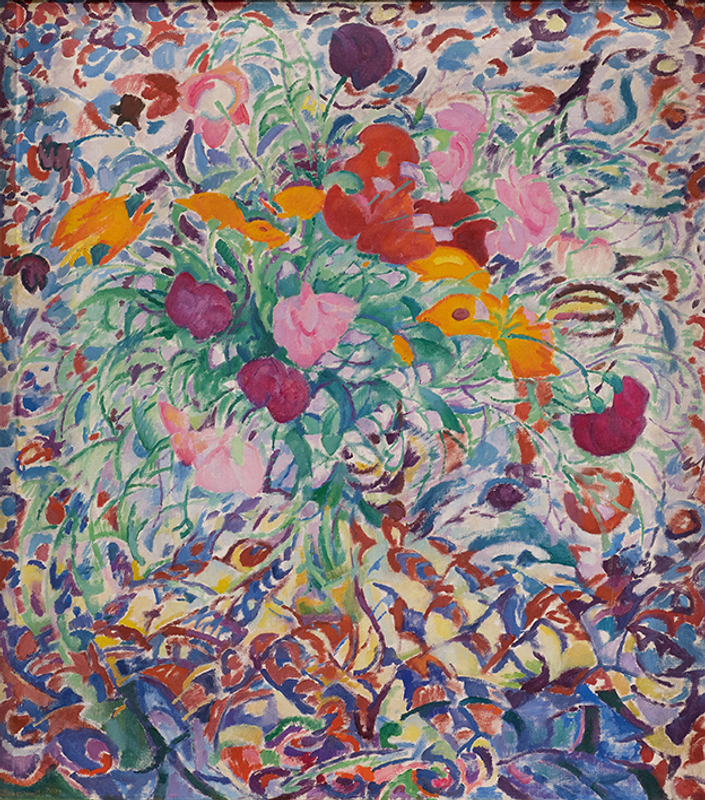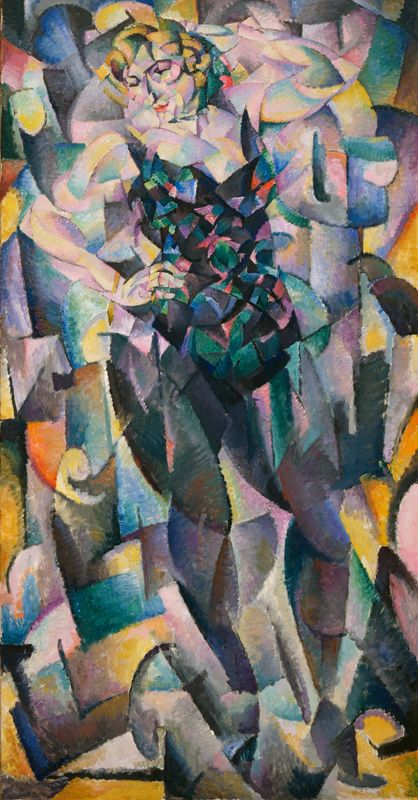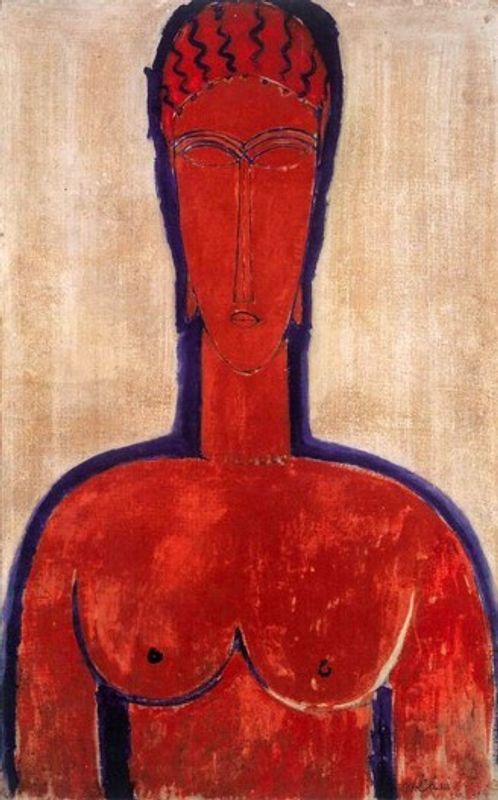1913. The Great Art Explosion
On view until January 11, 2026
The museum’s galleries are filled with festivity, freedom and bursts of colour. The Great Art Explosion celebrates the flourishing of Dutch modernism in a European context in 1913. The art world seemed to be dancing on the volcano, just before the peace of Europe went up in flames.
This exhibition is Jan Rudolph de Lorm’s farewell to Singer Laren, after 17 years as museum director. During this time he has often been moved by artworks of particular eloquence and dynamism. Remarkably, many of these paintings happen to date from 1913. Which prompted an in-depth art-historical exploration of this turbulent period. A visual journey that begins with Singer highlights like Composition de fleurs by Jan Sluijters and Summer Flowers by Leo Gestel. The common thread is Dutch paintings from 1913 that were shown at sensational exhibitions that year. Innovators from the Netherlands exhibited their work alongside that of the European avant-garde, artists like Wassily Kandinsky, Amedeo Modigliani, August Macke, Henri Le Fauconnier and Robert Delaunay.
The Great Art Explosion
In 1911-1913 Dutch artists and critics became increasingly familiar with modernist movements like cubism, futurism and expressionism, which hailed from France, Italy and Germany. Exhibitions of work by the avant-garde at artists’ associations and galleries sparked widespread debate in the press. International artistic exchange reached a high point in 1913. Besides shows by foreign modernists in the Netherlands, a number of Dutch artistic innovators exhibited work at leading international exhibitions, like the Erster Deutscher Herbstsalon (‘First German Autumn Salon’) in Berlin.
Artists’ associations played a vital role in the spread of modern art in the Netherlands. Artist Conrad Kickert, for example, established the Moderne Kunstkring (‘Modern Art Circle’), along with Jan Sluijters and Piet Mondrian. From 1911 onwards, they showed the cubist paintings of Pablo Picasso and Georges Braque. In 1912 De Onafhankelijken (‘The Independents’), which did not work with the customary jury system, was founded by Dutch modernists who ‘firmly reject[ed] anything that impedes and constrains’.
